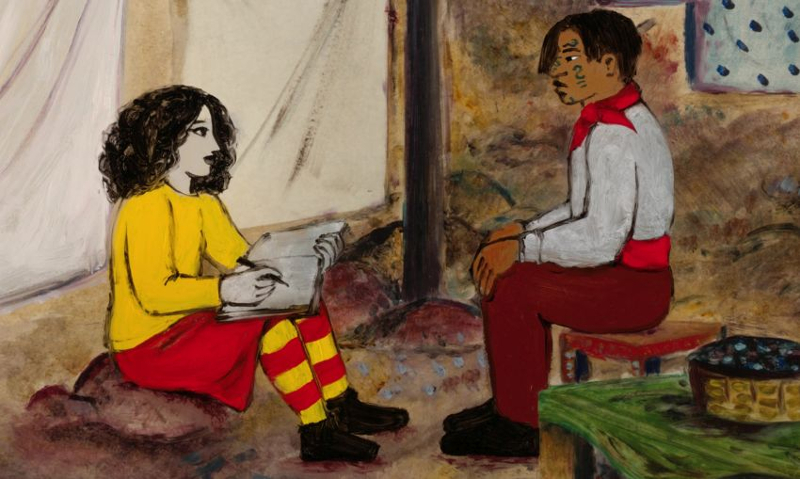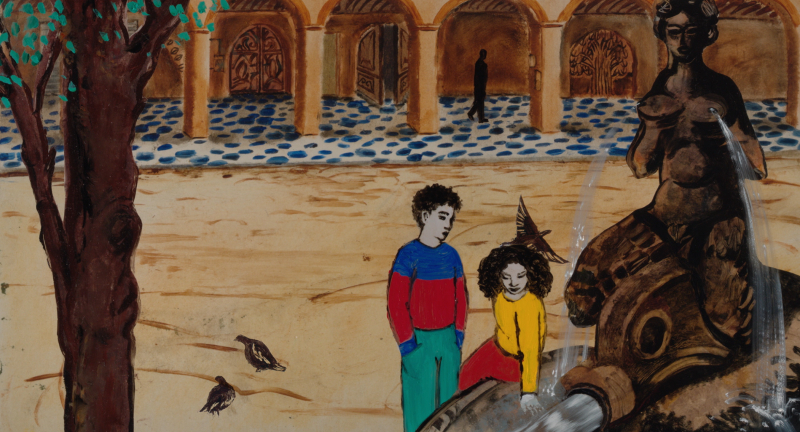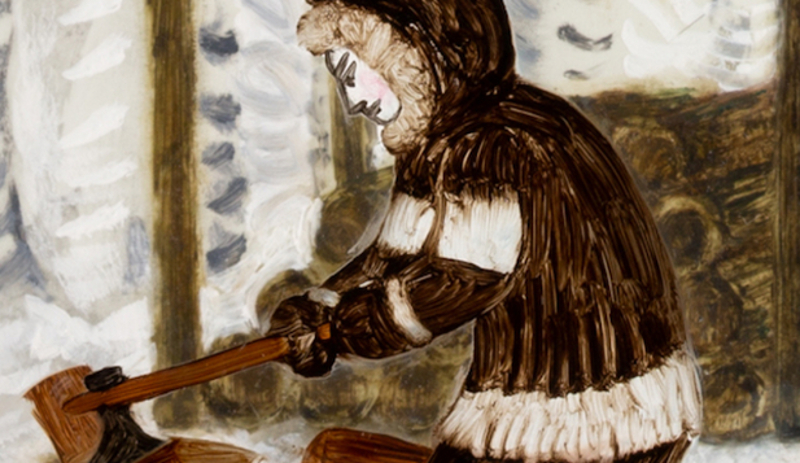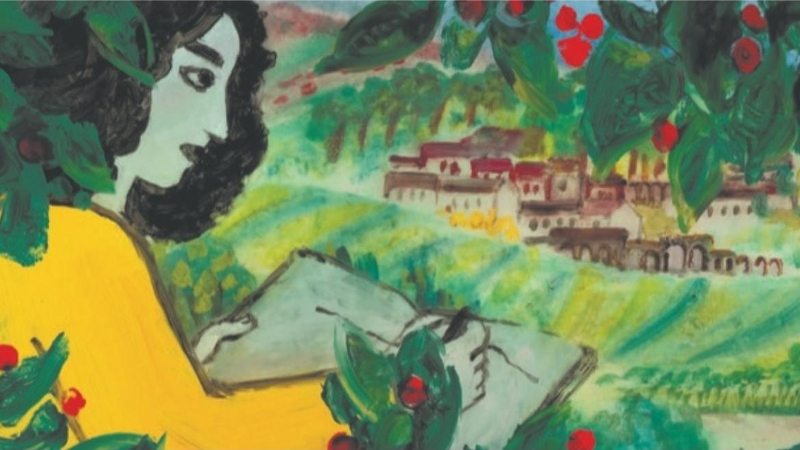Director – Florence Miailhe – 2021 – France, Germany, Czechia – 84m
*****
Two children undergo a series of adventures as they flee an ethnic cleansing pogrom in this animated feature made with oil paint on glass – from the BFI London Film Festival 2021 which runs from Wednesday, October 6th to Sunday, October 17th in cinemas and on BFI Player
Kyona and Adriel live with their mother, father and younger siblings in their village. One day, soldiers and dark, hooded shadow men arrive to massacre the locals Yelzid people. Somehow the family escape and board a train, but it’s stopped by soldiers for Control and their parents and younger siblings are detained on the platform. Kyona and Adriel must continue on alone and cross the border to safety.
This stakes its place in cinema history as the first feature to be realised using the time-worn animation technique of oil paint of glass. This technique makes the film analogous to watching a moving oil painting, but director Miailhe marshalls her serial images with a strong sense of narrative and additional filmic technique which hold the whole together.

Kyona loves to draw. Her sketchbook, which accompanies her everywhere, opens and closes the film, providing a perfect jumping off point to enter the oil on glass produced narrative. At the start, the book’s images are drawings of their village. By the end, they have become a vast repository of Kyona’s memories of all that she has gone through, sometimes with and sometimes separated from her brother. The sketchbook becomes a major constituent of the narrative spine as she and her brother undergo their perilous journey to safety.
This helps what are essentially a series of disparate episodes hang together as a coherent whole. Arriving in Stemetsvar, their first city, Kyona and Adriel fall in with young gang of street thieves The Ravens and their Fagin-like mentor Iskender after Kyona’s bag (containing her sketchbook) gets snatched.

Unscrupulous trafficker Jon gets them across the river but in an interlude recalling Hansel & Gretel sells them to fading star Florabelle and her husband Maxime who want to children to play the part of their own presumably deceased offspring Peter and Janet. Adriel plays along but Kyona won’t, so the couple resolve to get rid of and replace her.
The kids escape into the forest in a blizzard, and are separated. Kyona is rescued by a kindly old woman of few words widely regarded as a witch. As she blossoms into womanhood, Kyona is reunited with Adriel when she takes refuge in a travelling circus where local lothario Erdewan has romantic designs on her. The siblings eventually move on and end up in a detention camp where Kyona manages to hold on to her sketchbook which the guard want to bin. Eventually, they escape and reach the safety of the border.

Although it never eschews the violence or implications of its subject matter – there’s a sense of the very real danger that lone children face in these types of situations and at one point a sympathetic character is shot in the head at close range and killed instantly – parts of the narrative achieve an almost fairytale-like quality.
For instance, a valuable brooch is given to Kyona by the old woman who shelters her in the woods. When a magpie later snatches it from the hand of a lady prison guard searching the girl who shoots at it, Kyona’s shoving the guard to make her miss the bird deflects attention from her about to be binned sketchbook which she’s able to retrieve and hide in her clothing. Later still, the brooch becomes Kyona’s weapon of self-defence when it’s used to fatally stab an attacker in the neck.

In the earlier Florabelle and Maxime episode, the ostentatiously wealthy couple’s house and garden shimmer menacingly with animated paint marks lending an unearthly, otherworldly quality unimaginable in either untreated live action or more traditional forms of animation.
Indeed, it’s impossible to separate this extraordinary animation technique from its story and subject matter throughout as it seems such a perfect match. Sometimes as when birds escape an aviary or the time spent in the circus, the visuals explode into vibrant colour. The sequences of the opening ethnic cleansing, those involving soldiers, their shadowy, dark-hooded accomplices or the police and the late episode in the detention camp are more dark, subdued and menacing. And a scene where the two kids, lacking passports, must cross a river in an atrocious storm forcing them to hang on to their small, exposed seat in the tiny boat while waves rapidly rise and fall is truly terrifying and heart-stopping.
In short, this magnificent piece of work holds the attention from start to finish, pushes the boundaries of what’s technically possible in an animated feature tells a rattling good yarn and addresses deep seated social and political issues into the bargain. Will some astute UK distributor pick it up and give it the cinema release it deserves, I wonder?
The Crossing plays in the BFI London Film Festival 2021 which runs from Wednesday, October 6th to Sunday, October 17thin cinemas and on BFI Player.
Trailer (French, no subtitles):
Awards
2021
Annecy International Animation Festival
Jury Distinction
